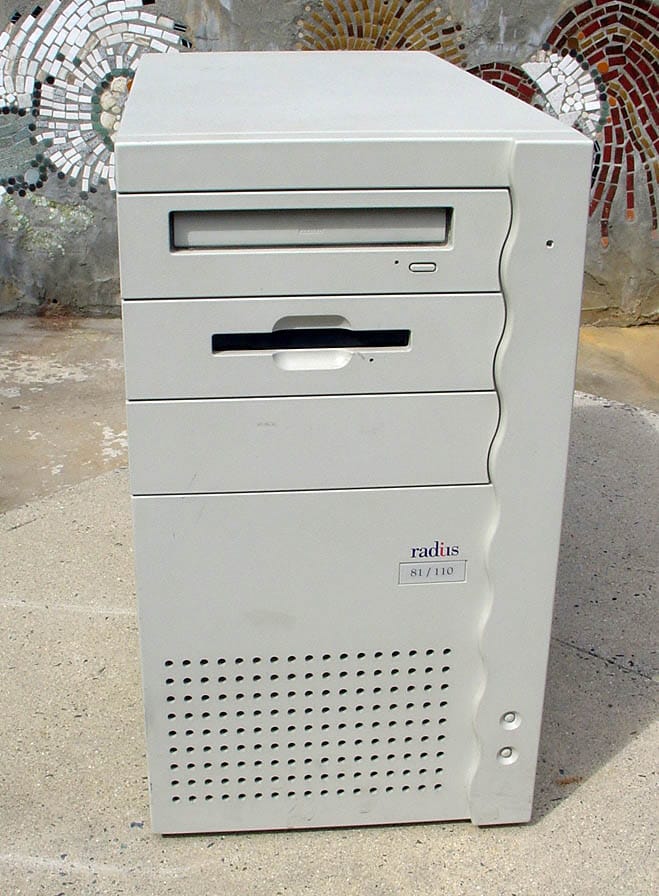[ad_1]
 March 27, 1995: The Radius System 100, the first official Macintosh clone, launches.
March 27, 1995: The Radius System 100, the first official Macintosh clone, launches.
A high-end computer made by a company founded by several notable Macintosh alumni, this marvelous machine kicks off the era of clone Macs in grand fashion. However, it won’t be long until things take a turn for the worse.
Radius System 100 launches
The System 100 Mac clone debuted at an event called Seybold Seminars ’95 in Boston. Although unauthorized Apple clones popped up in the past, this marked the first time Apple officially licensed another company to create a machine that would natively run Mac OS.
People often look back on the Mac clone era as a time of low-cost Macs designed to undercut Apple on cost. In fact, the Radius System 100 represented the complete opposite.
Aimed at media-intensive electronic publishers, a fully kitted-out System 100 cost $12,495. Adjusted for inflation, that’s more than $25,400 today. And you still needed to buy a monitor.
A Macintosh clone for pros: System 100 specs

Photo: Digibarn CC
Radius System 100 customers didn’t get shortchanged on specs, though. The top-end Mac clone came with a modified Power Mac 8100 motherboard, 110 MHz 601 processor, 72MB of RAM, a CD-ROM drive, a 2GB hard disk, accelerated 24-bit video out to a 1,600-by-1,200-pixel display, and preinstalled Photoshop software. All of this came inside a ridiculously tough tower enclosure.
Radius’ decision not to cut corners shouldn’t come as much of a surprise. The company had a long history with Apple. It was founded by members of the former Macintosh team in 1986, two years after the first Mac shipped. Founders included Burrell Smith, Andy Hertzfeld and Mike Boich. Many of the same names were immortalized as team members who signed the inside of the original Macintosh case.
Before moving into clone Macs with the System 100 computer, Radius made waves by shipping the Radius Full Page Display. A vertically oriented second screen for personal computers (initially the Macintosh II), the Radius monitor pioneered the concept of letting users drag windows between multiple displays.
Troubled waters for Macs and Mac clones?
By 1995, however, both Apple and Radius struggled in the marketplace. Despite launching some massively innovative products, Apple suffered due to the rise of Microsoft Windows 95 and some questionable management decisions.
This began a period during which Cupertino would hemorrhage boatloads of cash.
Radius, meanwhile, also stumbled, even though the company scored a massive coup when it became the second third-party manufacturer to sign a deal licensing the Macintosh operating system. (Although it was the second to sign up, after Power Computing, Radius became the first to bring an actual Mac clone to market on this day in 1995.)
As per the deal Radius signed, the clone-maker only paid Apple $50 per machine produced. Apple thought the clones would increase the Mac’s market share. However, the strategy actually cost Cupertino money. It stopped people from buying Macs directly from Apple, without enlarging the size of the overall pie.
Radius quit making the System 100 computer in January 1996. The company then sold its Mac license to Taiwanese scanner manufacturer Umax Data Systems in May. The following year, when Steve Jobs returned to Apple and began to turn the company in the right direction, he pulled the plug on clone Macs.
Did you own, or ever use, a Radius System 100 Mac clone? What are your memories of this era in Apple history? Leave your comments below.
[ad_2]
Source Article Link

